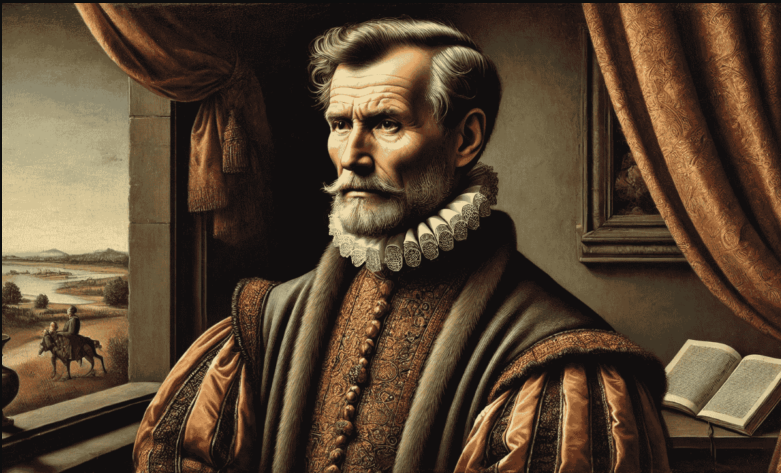Introduction:
The 1555 Portrait Servais attributed to the renowned artist Anthonis Mor is a significant work of art from the Renaissance period. This portrait not only captures the subject’s likeness but also reflects its time’s cultural and artistic innovations. This article will delve into the artist’s background the story behind the painting and the intriguing features that make this portrait a masterpiece.
Background on the Artist:
Anthonis Mor: A Brief Biography
Anthonis Mor, also known as Antonio Moro was born around 1517 in Utrecht Netherlands. He emerged as a prominent portrait painter during the Northern Renaissance, a period marked by a revival of classical learning and wisdom. Mor’s early training under Jan van Scorel a Dutch painter significantly influenced his style. He later traveled to Italy, where he absorbed the techniques of the Italian Renaissance blending them with his Northern European roots.
Artistic Style and Influence:
Mor’s work is characterized by its meticulous attention to detail and realistic representation of his subjects. He was adept at capturing not just the physical likeness but also the personality and status of his sitters. His portraits often featured rich textures elaborate costumes and a keen sense of light and shadow which added depth and realism to his work. Mor’s ability to blend Northern Renaissance techniques with Italian styles set him apart from his contemporaries.
The Story Behind the Painting:
Commission and Subject:
The 1555 Portrait Servais was commissioned by Servais de Witte, a prominent figure in Antwerp’s merchant class. During the mid-16th century Antwerp was a bustling hub of commerce and culture and de Witte’s wealth and status were emblematic of this golden age. The portrait was intended to showcase his success and social standing.
Symbolism and Significance:
The portrait is more than just a representation of Servais de Witte it reflects the era’s cultural and economic aspirations. The choice of attire the confident pose and the detailed background all convey a sense of power and prestige. Each element of the painting was carefully chosen to highlight de Witte’s importance and the prosperity of Antwerp during this period.
Intriguing Features of the Painting:
Realism and Detail:
One of the most striking features of the 1555 Portrait of Servais is its realism. Mor’s meticulous attention to detail is evident in the lifelike representation of Servais’ face the intricate patterns of his clothing, and the subtle play of light and shadow. The textures of the fabrics, the sheen of the jewelry and the naturalistic rendering of the skin all contribute to the painting’s vivid realism.
Use of Color and Light:
Mor’s use of color and light further enhances the portrait’s impact. The rich vibrant colors of Servais’ attire contrast with the subdued background drawing the viewer’s attention to the subject. The careful use of light and shadow adds depth and dimension creating a three-dimensional effect that brings the portrait to life.
Emotional Expression:
Beyond its technical brilliance the portrait also captures the emotional depth of its subject. Servais’ expression is one of calm confidence reflecting his status and self-assurance. Mor’s ability to convey such subtle emotions through his brushwork is a testament to his skill as a portraitist.
FAQs About the 1555 Portrait Servais
Who was Servais de Witte?
Servais de Witte was a wealthy merchant in Antwerp during the mid-16th century. His success in commerce and prominent social standing made him an ideal subject for a portrait that symbolized the era’s prosperity.
Why is the 1555 Portrait Servais significant?
The portrait is significant not only for its artistic excellence but also for its historical and cultural context. It reflects the economic prosperity of Antwerp during the Renaissance and showcases the artistic innovations of Anthonis Mor.
What techniques did Anthonis Mor use in this portrait?
Mor combined Northern Renaissance and Italian techniques including meticulous attention to detail realistic representation and light and shadow to create depth. His ability to blend these styles set him apart from his contemporaries.
Where can the 1555 Portrait Servais be viewed?
The current location of the 1555 Portrait Servais is not widely documented, but it is believed to be part of a private collection or housed in a museum that specializes in Renaissance art.
How does the portrait reflect the cultural values of its time?
The portrait reflects the cultural values of the Renaissance by emphasizing individual achievement wealth and social status. The detailed representation of Servais’ attire and the confident pose highlight the importance of commerce and the rise of the merchant class during this period.
Conclusion:
The 1555 Portrait Servais by Anthonis Mor is a remarkable example of Renaissance portraiture. Through its intricate details skilled techniques and symbolic elements it captures the essence of its subject and the cultural values of its time. This masterpiece continues to captivate viewers with its realism emotional depth and historical significance making it a timeless work of art.






